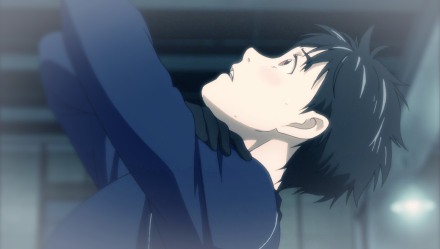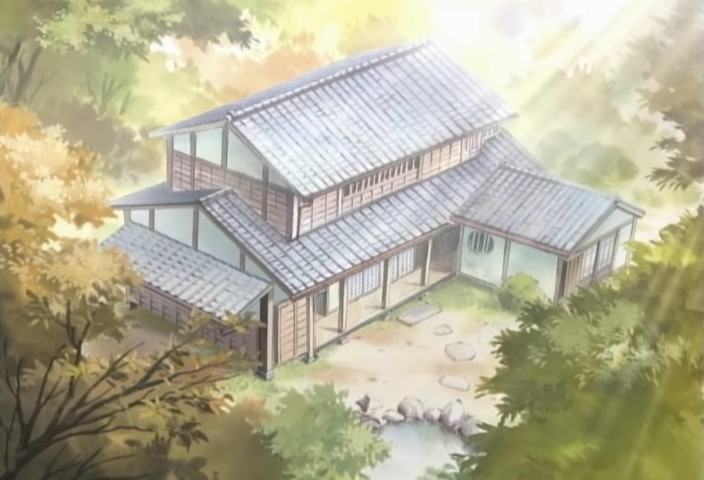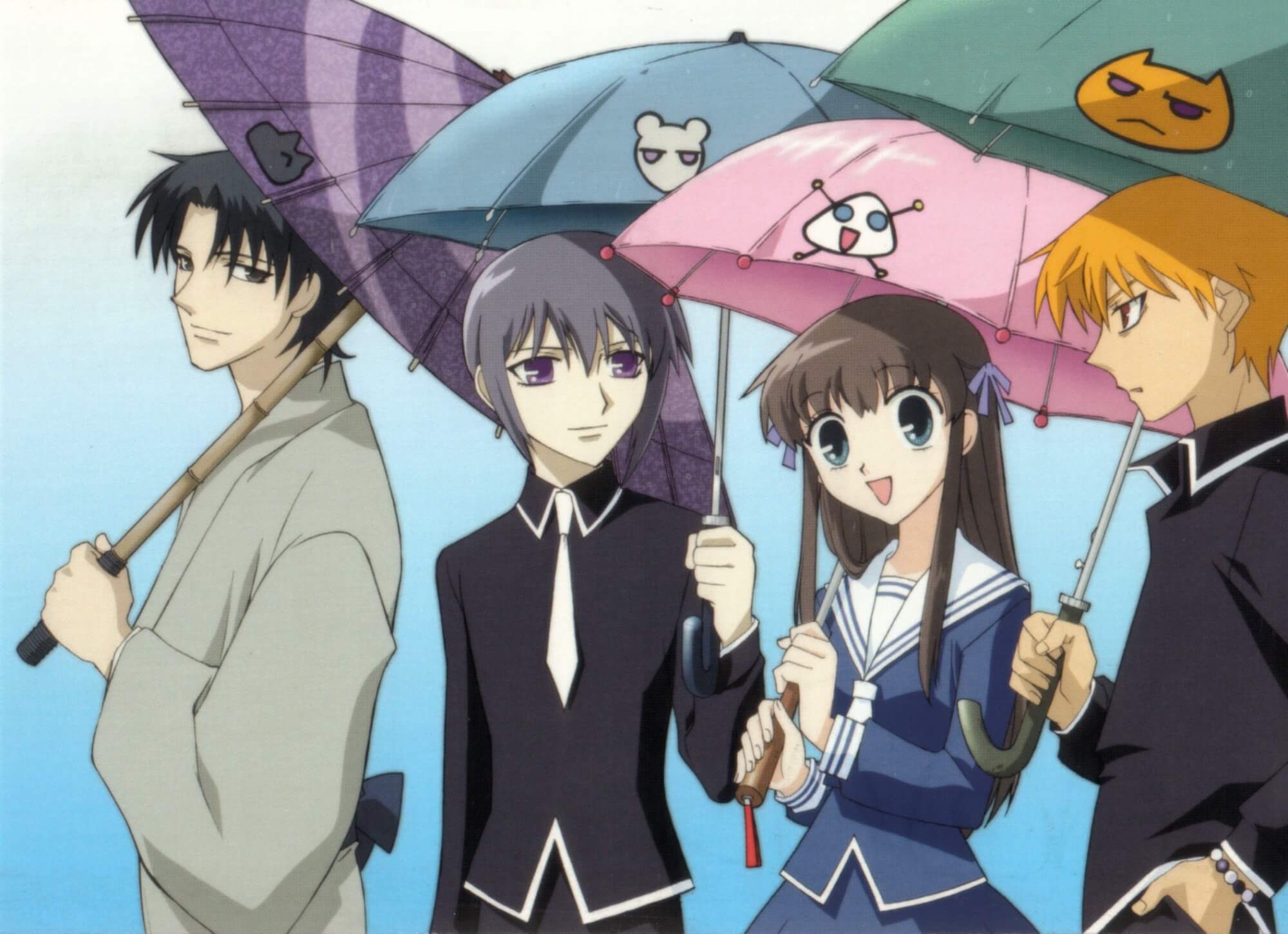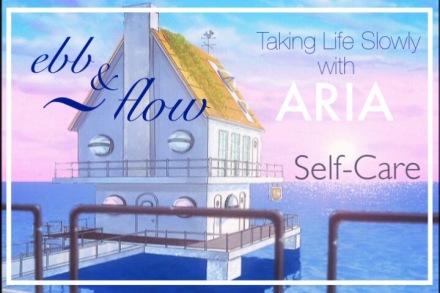Chances are that if you were linked here from another blogger pal, then you might be new. To those first-timers, “Hi, I’m Takuto, welcome to my anime cafe!” As part of the OWLS blog tour’s twelfth monthly topic, “Warmth,” I decided to incorporate what would have been my standard review of In This Corner of the World into a sympathetic discussion on the hardships of war and loss, and how love gives us the strength to continue being compassionate through even the worst of times.
It’s the season of joy, thankfulness, and love. This month’s topic is “Warmth.” Whether it is spending time with family members during the holiday season or with that special someone during New Year’s Eve, we will be discussing moments in anime and pop culture media that convey a feeling of happiness in our hearts. During times of struggles, we look towards the things that matter to us as a source of strength, hope, and happiness. We hope you enjoy this round of posts and that you, too, will have a wonderful holiday season!

I’ve nothing else to say for the intro! Thank you Lyn for twelve consecutively thoughtful topics to ponder each month—I’ve enjoyed writing for all of them!
A brief spoiler-free discussion on the fall 2016 anime film “In This Corner of the World,” produced by studio MAPPA, directed by Sunao Katabuchi (“Black Lagoon”), based on Fumiyo Kouno’s award-winning manga of the same name.
New Life, New Opportunities
In 1944, life for Suzu Urano starts slipping through her tiny calloused fingers. For one, she is married to Shuusaku Houjou, a reserved young clerk, and is sent off to the small town of Kure in Hiroshima where her husband works at the local naval base. Now living with the Houjou family, Suzu must adjust to her new life, which is made especially difficult since she quickly becomes an essential meal-making, chore-doing crutch for the family. She does all of the daily housework during the tough wartime conditions, and the familial disconnect Suzu experiences between her sister-in-law—timed with the regular air raids—makes both the political and household climates feel like battlefields.

When intense bombings by the U.S. military finally reach Kure in 1945, devastation to Hiroshima and its townsfolk, as well as its culture, forever shake the nation, and Suzu’s life is permanently impacted by the tragedies. “Much is gained by living in Kure, but with war, many things cherished are also lost.” It is only through the greatest perseverance and courage that Suzu manages to continue caring for those around her, and to truly live life to the fullest.
“Torn apart by war. Brought together by love.”
By its end, In This Corner of the World is a somber ode to history, wherein the tragedies of WWII’s Hiroshima bombing are experienced firsthand by the main characters. But before the bomb is dropped, the entire first half of the film winds us back to the 1920s, Suzu’s peaceful childhood. It starts this way to not only show Suzu’s developing story from beginning to end, but also to create the picturesque vision of pre-war times in Japan, specifically Hiroshima and its surrounding towns. As every 5 or 10-minute interval—marked by on-screen dates—brings us closer to that horrific day, August 6, 1945, your stomach starts churning in dreadful anticipation; you know what’s about to happen, and you’re almost left disbelieving how Suzu’s whole life could just fall apart in an instant.

Akin to African author Achebe’s world-renowned novel, Things Fall Apart, which was written to show that life, law, and liberty already existed before the white man saw the need to organize, colonize, and, get this, “save” Africa, Fumiyo Kouno’s story serves to inform the viewer about the other side of the Pacific. You are put through the trials and tribulations of Suzu’s daily life, from learning to properly make a meal using rations to understanding the familial benefits of marriage, in order to hopefully understand that despite their differing customs, both the attackers and the attacked have things they want to protect.
I set up a pretty overwhelming historical background here, but the film really isn’t that political at all. Rather, its a drama centered around one little girl’s average life during WWII, and how no matter the global circumstances plaguing a household cause ruin and chaos, life goes on. That’s right, life will always go on. There are always things to be fixed, clothes to be washed, and food to be cooked. Suzu understand this, and that’s why she faces each painstaking day blessed that there’s still a roof above her family’s head. In This Corner of the World, though rife with tragedy, is ultimately a heartwarming tale of Suzu’s prevailing love and healing hands.

A Hero at Home: Suzu Urano
Characterized as tiny, optimistic, and a bit aloof at times, Suzu Urano goes through great lengths to help in anyway she can, even if her assistance comically ends up backfiring in the end. She’s also incredibly creative, shown in both her beautiful landscape sketches and paintings, as well as when she wields her knowledge of samurai food rationing to construct some, at the very least, “interesting” dishes. Her artistic talents act as a sort of sanctuary for her, and it is through her simple yet gorgeous works that she meets many new friends and even potential lovers. But like all artistic endeavors, chores come first, and slowly you start to see the hobbies that she once did for herself fade away to make room for aiding the family.

On top of working her hardest around the house (her efforts eventually exceeding those of everyone around her), Suzu is a girl, a soon-to-be-woman who undergoes all of the same treatments that Japanese women received during the 1900s. From stricter expectations in the kitchen and household to family-controlled courtship, rarely is Suzu the master of her own fate. Yet somehow, Suzu makes the best of what is given to her, for merely being allowed to experience the tranquility and joys of everyday life in Kure is enough to give her hope and purpose. Honestly, what a woman!

Suzu only speaks out once or twice in the entire film—remember, this is a film that chronicles Suzu’s ENTIRE life! She many not be honest to herself all the time, frequently disregarding her own happiness and well-being for the sake of her family and her nation’s pride, but Suzu knows how to fight the good fight, as well as when to keep pushing on through the toughest of hardships. Between watching her frugal attempts at fitting in with her husband’s family, her struggle to adjust to life in Kure, and the tragedies of war she later encounters, it feels as if you physically and emotionally cannot go through as much heartache that is thrust upon her and make it out ok. Yet Suzu manages to bandage up her scars and continue making herself useful to everyone. The warmth she brings to the war-torn world embodies the purest light of hope in a time of darkness.
Visually, the Softest Movie I’ve Ever Seen
“It was like Studio Ghibli meets the Peanuts and together they talk about some pretty serious stuff.” This was my immediate reaction to the film which I posted on Twitter, and I still stand by these words now. The backgrounds are painted so smoothly, giving off an immense sense of ease, and the magical watercolor touch just feels so right. Even the characters, for a lack of a better word, look so . . . “soft.” There’s a lack of detail in their physical features, but it’s their sometimes cute, sometimes sorrowful mannerisms and words that convey their true characters. Seeing characters this adorable almost feels wrong for the tone of the film’s second half where the air raids become prominent, but it somehow works altogether as one moving, breathing, snapshot of history.

(If you watch the special feature clip “Hiroshima & Kure: Then & Now,” you’ll understand how and why it all looks so historically accurate; the attention to detail in re-creating several destroyed sites where famous architecture once stood was very commendable.)
The luscious animation is accompanied by equally gentle music, as kotringo’s (Rieko Miyoshi) soundtrack matches perfectly with the tone. At times uplifting, other times more tender or melancholic, tracks like “Kanashikute Yari Kirenai” or my personal favorite, the ED theme “Migite no Uta (みぎてのうた)” provide lovely messages to live by: “Even in this painful and broken world, there IS hope.”

Learn From Fiction: Heartwarming Tenderness Comes From How We Live
It is stories like Suzu Urano’s that give us all the fuzziest feelings of contentment and comfort. But like all stories, they eventually end, and once they’re over, the books get placed back on the shelves, and the DVDs and Blu-rays are ejected from their players. And that’s it. It’s all just entertainment, anyway.
*If you’ve ever thought this, then you completely missed the point as to why certain works even exist in the first place.
All fiction is written with messages, no matter how significant or insignificant. With the case of In This Corner of the World, it’s to showcase the tragedies of war firsthand, and the devastation that comes with violence. That should’ve been apparent from the synopsis alone. Looking deeper, we can understand more big takeaways from the film:
- Hardships exist everywhere—someone is always struggling
- Protect family, for without it we are fundamentally alone
- Gender roles can limit individuals from reaching their full potential
- The youth of today ARE our future
- With destruction comes the joy of rebirth
- By rebuilding from the ground up, we build a stronger foundation than the one before it
- Make the most of your life—you only get one, and it goes by incredibly fast
- WE ALL have the choice to be happy or sad, rude or nice—live the way you want to
- Be thankful for what the earth provides, and what you can do for it in return
- And lastly, to quote The End of Evangelion, “Anywhere can be paradise, so long as you have the will to live”
Just LOOK AT ALL OF THOSE THINGS I CAME UP WITH. And that only took me a couple minutes of reflection.

History will always be our greatest teacher
Authors, directors, artists, musicians—Creators improve on what skills they already have in order to teach us invaluable lessons about the human experience. They have the power to take all the world’s evil and tell us that life can be incredible, so long as we don’t repeat history’s mistakes. Don’t just watch a film: enjoy what it is trying to show you. Don’t just read a book: revel in the messages left in-between the lines. Take what you learn and monopolize on it! Essentially, BE the good in the world!
In This Corner of the World presents the catastrophic effects of humanity’s cruelty, savagery, and barbarity—yes, absolutely. But it also exists to tell us that through the ashes, we can rebuild; that we can be kind to others, even if they treat us harshly; that most of all, we have the choice to see the good in this wild, wicked, unfair world.

As a race, we have this terrible tendency to appear on the wrong side of history (if you know what I mean). The title In This Corner of the World refers to both Suzu’s tiny Kure house on the hill AND a state of harmony achieved by acknowledging and balancing the positives and negatives that life throws at us. A heartbreaking historical ballad for those we have wronged, and the terrible things we have done, In This Corner of the World is here to say that life goes on, and that as long as we try to understand one another, hope and a warm heart will always allow us to move forward.
We can love. We can rebuild. We can move on. But we’ll never truly forget.
There is only one corner of the universe you can be certain of improving, and that’s your own self. – Aldous Huxley
This can be a hard film to watch, but it all depends on how seriously you decide to take it. It has several comedic points of value in it, as well as a very cute presentation style, but don’t let those two aspects close you off from In This Corner of the World‘s subtle brilliance and emotional depth. As a powerful, touching work of art, this film is awarded the “Caffe Mocha” seal of approval, a rating for those special titles that I consider to be a must-watch!

This concludes my December 20th entry in the OWLS “Warmth” blog tour. Arria Cross of Fujinsei went right before me and expressed her sincere gratitude to all of her fellow readers, bloggers, and OWLS members in one emotional, heartwarming post. Now, look out for fellow aniblogger LitaKino (Lita Kino Anime Corner) with a surprise celebratory birthday video this Friday, December 22nd! Thank you so much for reading, from my first OWLS post in January to here at the end—I do hope you have enjoyed them, as I do really, really like writing them! Until next time, this has been
– Takuto, your host






























